At first glance, a new concept for a NASA habitat on Mars looks like a cross between Mark Watney’s inflatable potato farm from “The Martian” and the home of Luke’s Uncle Owen on Tatooine from “Star Wars.”
The key to the new design relies on something that may or may not be abundant on Mars: underground water or ice.
The “Mars Ice Home” is a large inflatable dome that is surrounded by a shell of water ice. NASA said the design is just one of many potential concepts for creating a sustainable home for future Martian explorers. The idea came from a team at NASA’s Langley Research Center that started with the concept of using resources on Mars to help build a habitat that could effectively protect humans from the elements on the Red Planet’s surface, including high-energy radiation.
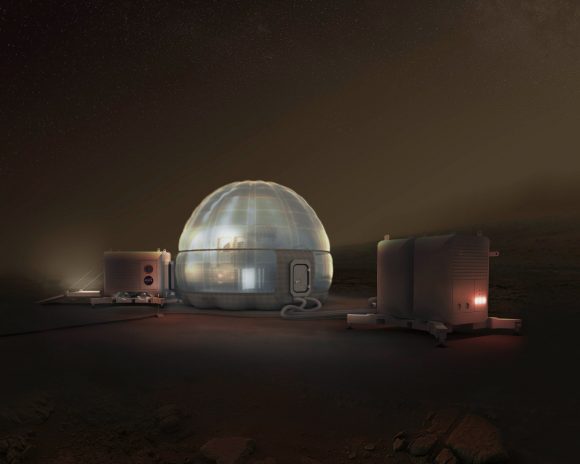
Space Exploration Architecture.
Langley senior systems engineer Kevin Vipavetz who facilitated the design session said the team assessed “many crazy, out of the box ideas and finally converged on the current Ice Home design, which provides a sound engineering solution,” he said.
The advantages of the Mars Ice Home is that the shell is lightweight and can be transported and deployed with simple robotics, then filled with water before the crew arrives. The ice will protect astronauts from radiation and will provide a safe place to call home, NASA says. But the structure also serves as a storage tank for water, to be used either by the explorers or it could potentially be converted to rocket fuel for the proposed Mars Ascent Vehicle. Then the structure could be refilled for the next crew.
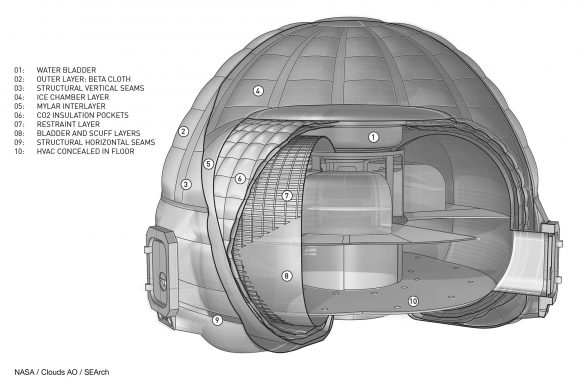
Other concepts had astronauts living in caves, or underground, or in dark, heavily shielded habitats. The team said the Ice Home concept balances the need to provide protection from radiation, without the drawbacks of an underground habitat. The design maximizes the thickness of ice above the crew quarters to reduce radiation exposure while also still allowing light to pass through ice and surrounding materials.
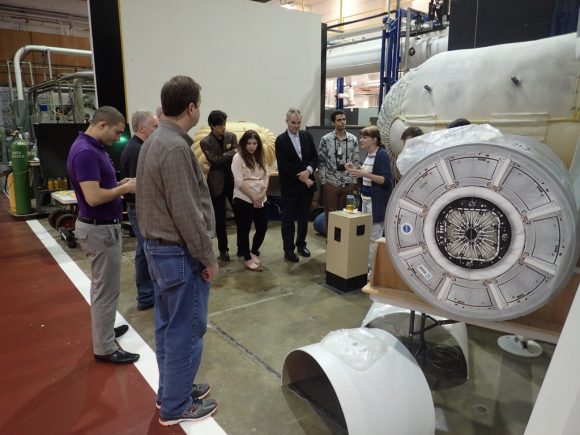
Credits: Courtesy of Kevin Kempton/NASA.
“All of the materials we’ve selected are translucent, so some outside daylight can pass through and make it feel like you’re in a home and not a cave,” said Kevin Kempton, also part of the Langley team.
One key constraint is the amount of water that can be reasonably extracted from Mars. Experts who develop systems for extracting resources on Mars indicated that it would be possible to fill the habitat at a rate of one cubic meter, or 35.3 cubic feet, per day. This rate would allow the Ice Home design to be completely filled in 400 days, so the habitat would need to be constructed robotically well before the crew arrives. The design could be scaled up if water could be extracted at higher rates.
The team wanted to also include large areas for workspace so the crew didn’t have to wear a pressure suit to do maintenance tasks such as working on robotic equipment. To manage temperatures inside the Ice Home, a layer of carbon dioxide gas — also available on Mars — would be used as in insulation between the living space and the thick shielding layer of ice.
“The materials that make up the Ice Home will have to withstand many years of use in the harsh Martian environment, including ultraviolet radiation, charged-particle radiation, possibly some atomic oxygen, perchlorates, as well as dust storms – although not as fierce as in the movie ‘The Martian’,” said Langley researcher Sheila Ann Thibeault.
Find out more about the concept here.
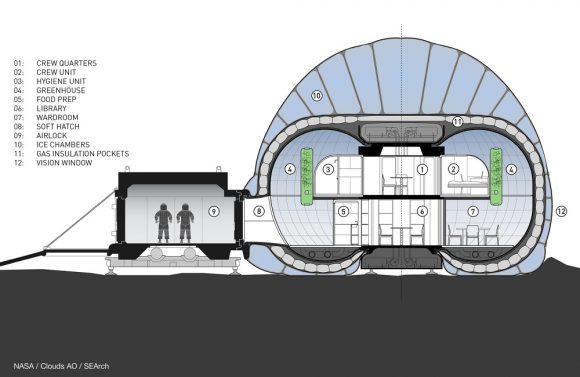

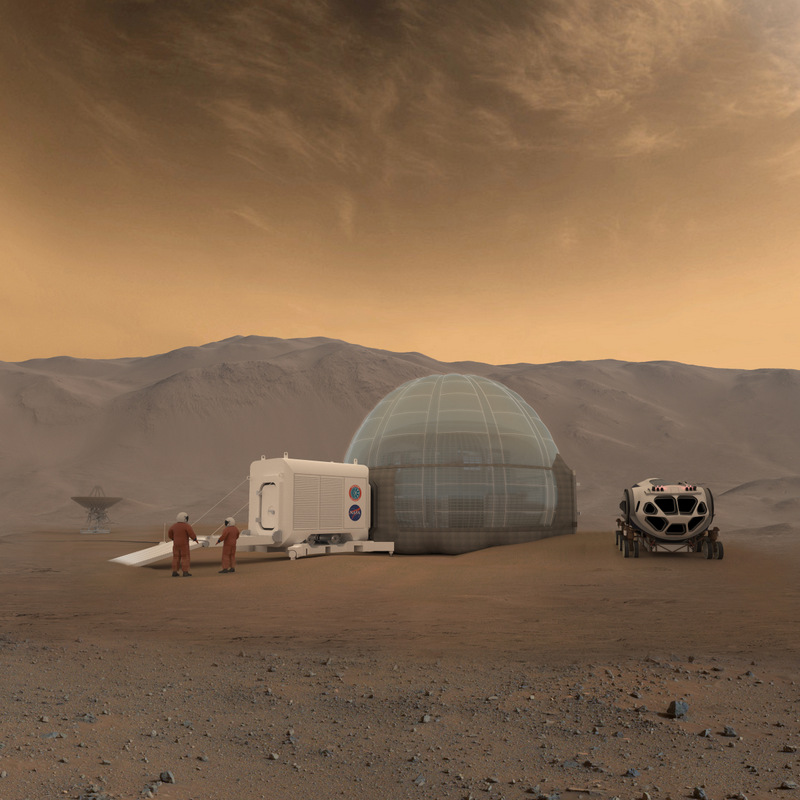
Great ideas, NASA. Now, how about incorporating some of those same ideas in the crew module for a Mars expedition, starting with a large Bigelow module, not forgetting an ice layer for radiation shielding? Put the module on the front end of the spacecraft, tankage in the middle and main engines at the rear. Probably need an appropriate, stand-off shield to protect the module from meteor strikes. Stand-off shields are SOP for light armored vehicles to protect them from RPG strikes.
And please NASA, deep-six your exercise bikes. If you want the Astronauts to be in reasonably good health after the 8-month trip (coming and going), then have the entire spacecraft rotate, end over end, sufficient to provide, oh I don’t know, maybe 0.5 G acceleration from centripetal force.
If you need any more ideas, I’m always available as a consultant!